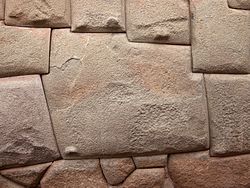

A shabono (also xapono, shapono, or yano) is a hut used by the Yanomami, an indigenous people in extreme southern Venezuela and extreme northern Brazil. [1]
Used as temporary homes, traditionally constructed mainly of thatched palm leaves and wood, shabonos are built in clearings in the jungle, using the wood cleared to build a palisade with a thatched roof that has a hole in the middle.
In traditional villages, multiple shabonos, each conical or rectangular in shape, surround a central open space. Each family unit has its own area within a given shabono separated by a wooden post. These would be a home for around 50 people.
